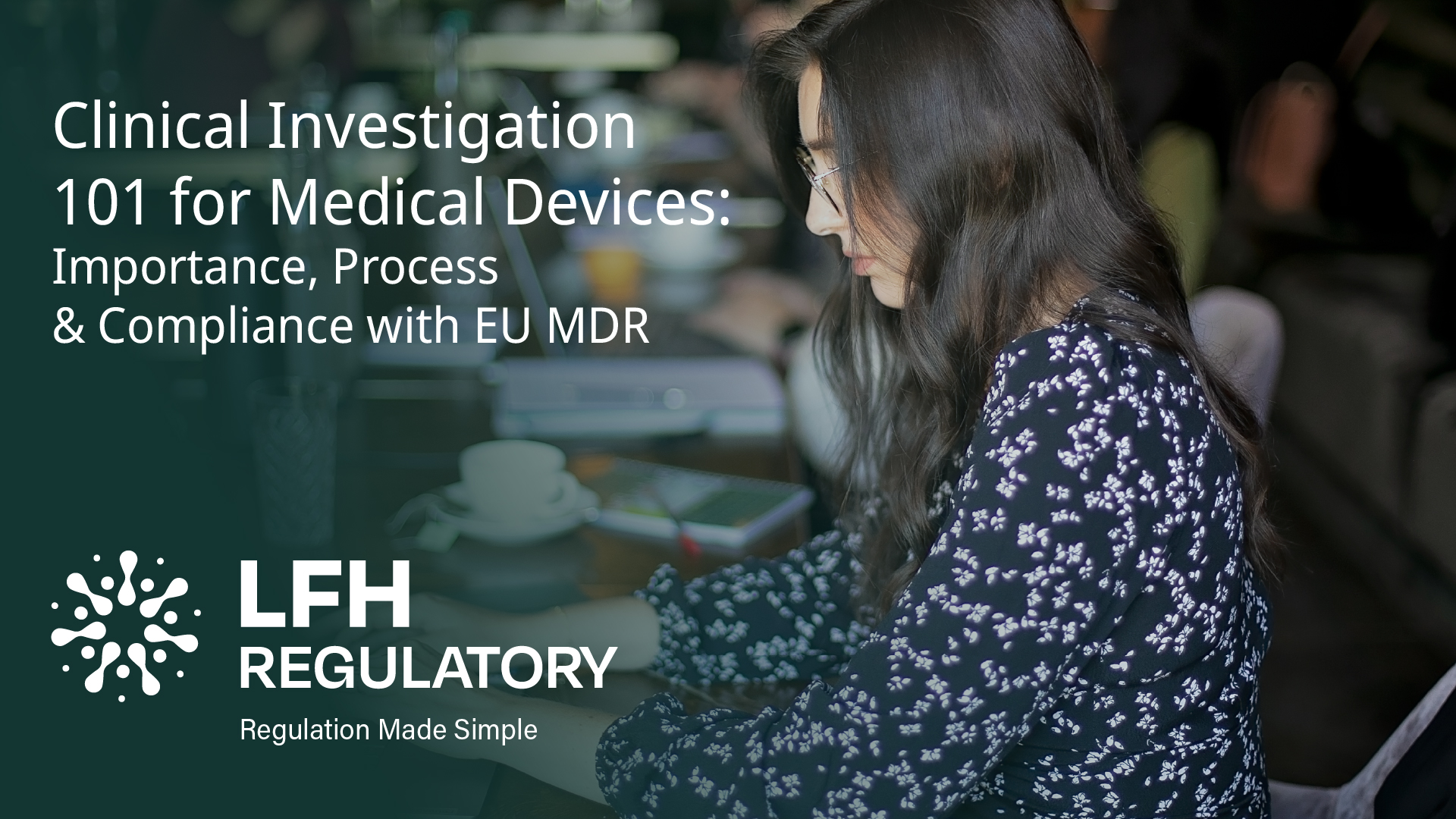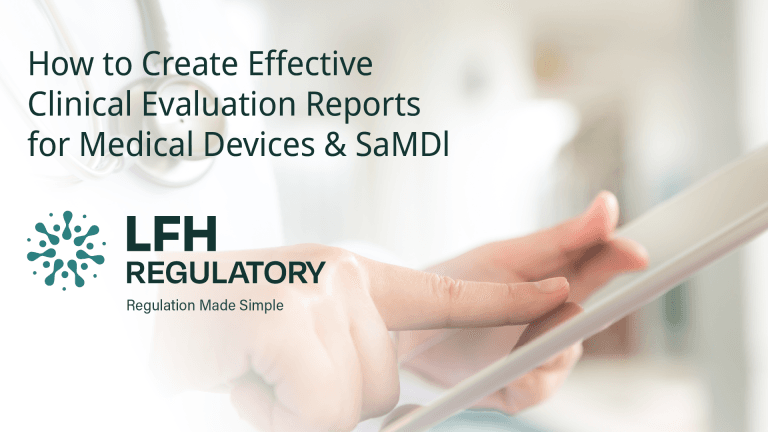Clinical investigations are essential in the development and regulation of medical devices, ensuring their safety, efficacy, and performance. Under the European Medical Device Regulation (MDR) 2017/745, clinical investigations have become more structured and rigorous, requiring thorough planning, precise execution, and compliance with regulatory frameworks. In this blog, we’ll explore what clinical investigations entail, why they are crucial for medical devices, and how to conduct them effectively while adhering to the EU MDR.
What Is a Clinical Investigation?
According to the EU MDR, a clinical investigation is defined as “any systematic investigation involving one or more human subjects, undertaken to assess the safety or performance of a device.”
Clinical investigations are critical for clinical evaluation, which is the process of collecting clinical data to demonstrate that a medical device is safe and performs as intended. This is a key part of the process for obtaining or maintaining CE marking for a device.
The goal of a clinical investigation is to confirm or refute the manufacturer’s claims regarding the safety, performance, and overall benefit-risk profile of the device. These investigations translate scientifically tested innovations into clinical practice, providing valuable data on device performance and patient outcomes.
Chapter I of Annex XV of the MDR details the requirements of the clinical investigations.
Types of Clinical Investigations for Medical Devices
There are different types of clinical investigations, categorised by their purpose and timing:
- Pre-market Clinical Investigations
These are conducted before a device is CE-marked to gather clinical data that demonstrates compliance with MDR safety and performance requirements for initial regulatory approval. See MDR Article 61 & 62, Annex XV. - Post-market Clinical Follow-up (PMCF) Investigations
These studies are carried out on devices that already bear the CE mark. Their purpose is to further assess the device’s safety and effectiveness in real-world settings after it has entered the market. See MDR Article 74. - Other Clinical Investigations
These investigations include studies for research purposes, feasibility studies, or the exploration of new indications for already CE-marked devices. See MDR Article 82(1), providing the detailed Requirements regarding other clinical investigations for CE-marked devices used for a new/unapproved purpose.
Why Are Clinical Investigations Important?
- Regulatory Compliance:
Clinical investigations are often mandatory for high-risk devices (e.g., Class III or implantable devices) to demonstrate conformity with the EU MDR and secure market access. - Patient Safety:
These studies help identify any potential risks, side effects, or safety concerns associated with a device, ensuring it is safe for use. - Market Access:
Successful clinical investigations are essential for regulatory approval and market entry in the European Union. - Device Improvement:
Clinical investigations provide manufacturers with the insights needed to refine designs and address potential flaws in a device’s usability or performance. - Post-market Surveillance:
PMCF investigations are critical for long-term monitoring of devices once they are on the market, ensuring their ongoing safety and effectiveness.
How to Conduct a Clinical Investigation Correctly
Conducting a clinical investigation requires careful preparation, regulatory adherence, and
ethical oversight. Below is a step-by-step guide on how to conduct a clinical investigation for
medical devices effectively:
- Define the Purpose and Objectives
Before initiating a clinical investigation, clearly define the investigation’s purpose. The
objectives should align with the clinical evaluation plan and the intended purpose of the
device. All regulatory requirements, international standards, and relevant guidance documents should be identified and incorporated into the planning phase. It is important that all persons involved with the study understand their roles and responsibilities. The clinical investigation study is well organised and conducted in accordance with relevant QMS practices. - Develop a Clinical Investigation Plan (CIP)
A Clinical Investigation Plan (CIP) outlines the rationale, objectives, design, and
methodology of the study. The CIP must comply with Section 3 of Chapter II of Annex XV of
the MDR and align with ISO 14155:2020, the international standard for good clinical practice
(GCP) in medical device studies.
Key components of the CIP include:
● Study Objectives and Rationale:
The purpose of the study, its scientific basis, and its relevance to device safety and
performance.
● Study Design and Methodology:
Detailed descriptions of the clinical trial design, methodology, and statistical
approach for data collection and analysis.
● Inclusion and Exclusion Criteria:
Guidelines for selecting participants and ensuring the study’s validity.
● Risk Management and Safety Measures:
Procedures for monitoring patient safety and managing adverse events. - Obtain Regulatory and Ethical Approvals
Before initiating a clinical investigation, manufacturers must:
● Obtain approval from the relevant national competent authorities (NCAs).
● Submit the CIP and supporting documents for review.
● Obtain ethics committee approval to ensure that the investigation protects the rights
and safety of participants.
● Register the clinical investigation in relevant databases, such as EUDAMED. - Implement Quality Management Practices
To ensure compliance with the MDR, manufacturers must establish a Quality Management System (QMS) that addresses clinical investigation planning, design, execution, and data analysis. The QMS should incorporate procedures for managing and documenting the investigation within the framework of regulatory requirements. - Analyse Data and Report Findings
Once the investigation concludes, statistical analysis must be performed to evaluate the device’s safety and performance. The results should be documented in a clinical investigation report must be generated (not sure of meaning) in accordance with MDR Annex XV requirements. Finally, submit findings to the competent authorities and, if applicable, publish the findings in a scientific journal. - Conduct the Investigation with Proper Oversight
Monitor the investigation closely to ensure compliance with the CIP and regulatory standards. Appoint independent monitors to oversee the study, manage adverse events, and ensure data integrity.
● Monitor the Study:
Appoint independent clinical monitors to ensure the study adheres to the CIP.
● Manage Adverse Events:
Report any serious adverse events (SAEs) to the appropriate authorities promptly.
● Ensure Data Integrity:
Establish reliable systems for collecting, storing, and analysing data to maintain study validity.
Conclusion
Clinical investigations are to be performed on the basis of an appropriate plan of investigation reflecting the latest scientific and technical knowledge and defined in such a way to be able confirm or refute the manufacturer’s claims regarding the safety, performance and aspects relating to the benefit-risk determination of devices.
The clinical investigation is to translate scientifically tested innovations into clinical practice to provide patients with new treatments.
Clinical investigations are an essential part of the medical device lifecycle. They ensure that devices meet regulatory requirements for safety and performance, which is crucial for obtaining or maintaining CE marking.
By following best practices such as developing a comprehensive CIP, adhering to GCP standards, and ensuring proper oversight, manufacturers can ensure their devices comply with regulatory requirements while maintaining patient safety. For additional guidance, refer to official MDR documents, ISO 14155:2020, and MDCG 2021-6 and MDCG 2024-3 guidelines.
Need help with conducting your clinical investigation? Contact us to speak with one of our specialist consultants today.






